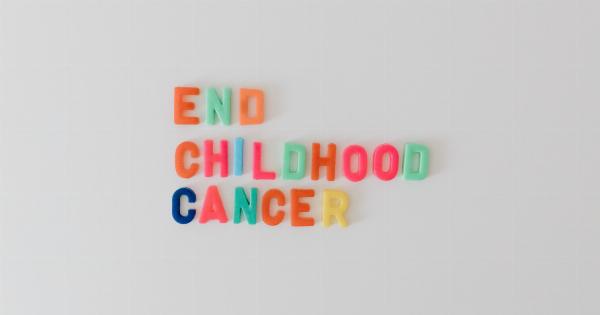Cancer is a disease that affects people of all ages, including young individuals. While cancer is often associated with older individuals, there are certain types of cancer that are more common among young people.
Understanding the most common forms of cancer in young individuals is crucial for early detection, diagnosis, and effective treatment. This article will explore some of the most prevalent cancers among young people, their causes, symptoms, and available treatments.
1. Breast Cancer
Breast cancer is one of the most common forms of cancer among young women. While it is more prevalent in older women, it can occur in women under the age of 40 as well.
Young individuals with breast cancer often face unique challenges, such as fertility preservation and early menopause. Self-breast examination, regular mammograms, and genetic testing can aid in early detection and treatment planning.
2. Testicular Cancer
Among young men, testicular cancer is one of the most frequently diagnosed forms of cancer. It typically affects men between the ages of 20 and 40. Testicular cancer has a high cure rate, especially when diagnosed early.
Men should be encouraged to perform regular testicular self-examinations to detect any changes or abnormalities.
3. Melanoma
Melanoma, a type of skin cancer, is more commonly seen in young individuals compared to other types of cancer. Excessive sun exposure, tanning bed usage, and a family history of melanoma are some of the risk factors associated with this cancer.
Regular skin examinations, self-examinations, and the use of sun protection measures are crucial in preventing and detecting melanoma.
4. Cervical Cancer
Cervical cancer primarily affects young women and is often caused by infection with high-risk strains of the human papillomavirus (HPV).
Regular Pap tests and HPV vaccinations have significantly reduced the incidence of cervical cancer in young individuals. Early detection through routine screenings can lead to effective treatment and improved outcomes.
5. Hodgkin’s Lymphoma
Hodgkin’s lymphoma, a cancer of the lymphatic system, is most frequently diagnosed in young adults between the ages of 15 and 35.
The exact cause of this cancer is unknown, but risk factors include a family history of lymphoma, weakened immune system, and certain infections. Early symptoms, such as swollen lymph nodes and unexplained fatigue, should be promptly evaluated by a healthcare professional.
6. Bone Cancer
Although rare, bone cancer can occur in young individuals. Osteosarcoma and Ewing sarcoma are the most common types of bone cancer in young people. Symptoms may include bone pain, swelling, and fractures.
Prompt diagnosis and treatment, often involving a combination of chemotherapy, surgery, and radiation therapy, can enhance survival rates.
7. Thyroid Cancer
Thyroid cancer is relatively rare among young individuals, but its incidence has been increasing. Females are more commonly affected than males.
Exposure to radiation during childhood, certain inherited genetic syndromes, and family history are associated with an increased risk of thyroid cancer. Regular neck examinations and thyroid ultrasounds can aid in early detection.
8. Leukemia
Leukemia is a type of cancer that affects the blood and bone marrow. It is more commonly diagnosed in children and older adults, but it can also occur in adolescents and young adults.
There are different types of leukemia, including acute lymphoblastic leukemia (ALL) and acute myeloid leukemia (AML). Symptoms may vary depending on the type and stage of leukemia and may include tiredness, pale skin, frequent infections, and unexplained bleeding or bruising.
9. Colorectal Cancer
While colorectal cancer is more prevalent in older individuals, there has been an alarming increase in its incidence among young people. Lifestyle factors such as poor diet, sedentary behavior, and obesity contribute to this rise.
Colonoscopy and other screening tests may be recommended at an earlier age for individuals with a family history or certain genetic conditions.
10. Brain Tumors
Brain tumors can occur in individuals of all ages, including young people. Certain types of brain tumors, such as medulloblastomas, gliomas, and ependymomas, are more frequently diagnosed in children and young adults.
Symptoms may vary depending on the location and size of the tumor, but can include headaches, seizures, changes in vision or hearing, and cognitive difficulties. Early diagnosis and treatment, often involving surgery, radiation, and chemotherapy, are crucial for better outcomes.
Conclusion
Although cancer is generally associated with older individuals, young people can also be affected by various forms of cancer.
Breast cancer, testicular cancer, melanoma, cervical cancer, Hodgkin’s lymphoma, bone cancer, thyroid cancer, leukemia, colorectal cancer, and brain tumors are among the most common types of cancer in young individuals. Regular screenings, early detection, and prompt treatment play a vital role in improving outcomes for these individuals.
Cancer awareness, prevention strategies, and support systems should be developed to address the specific needs of young people affected by cancer.



























